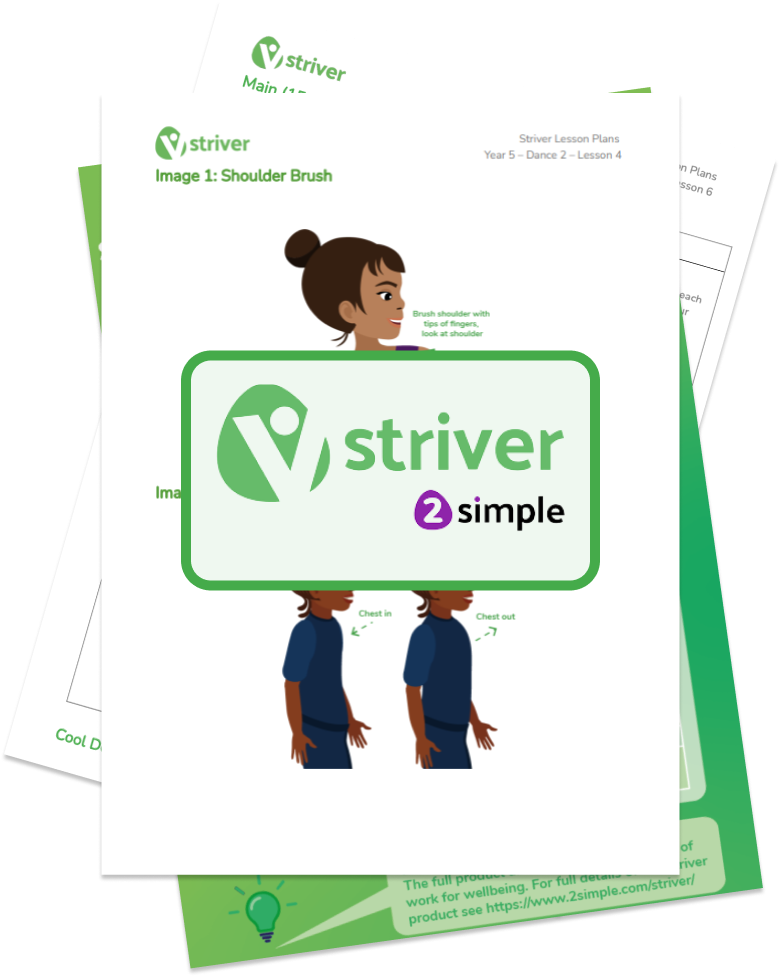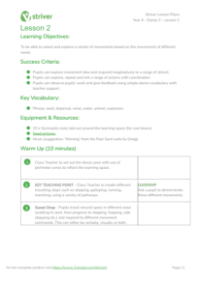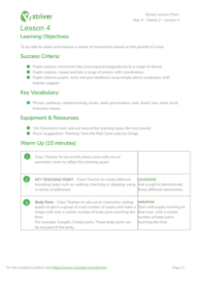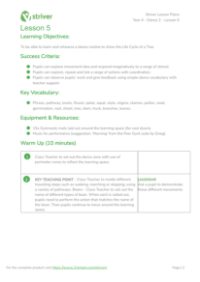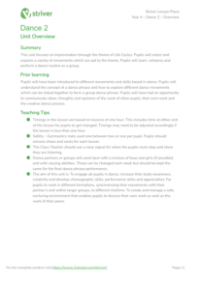Dance 2 - Lesson 1
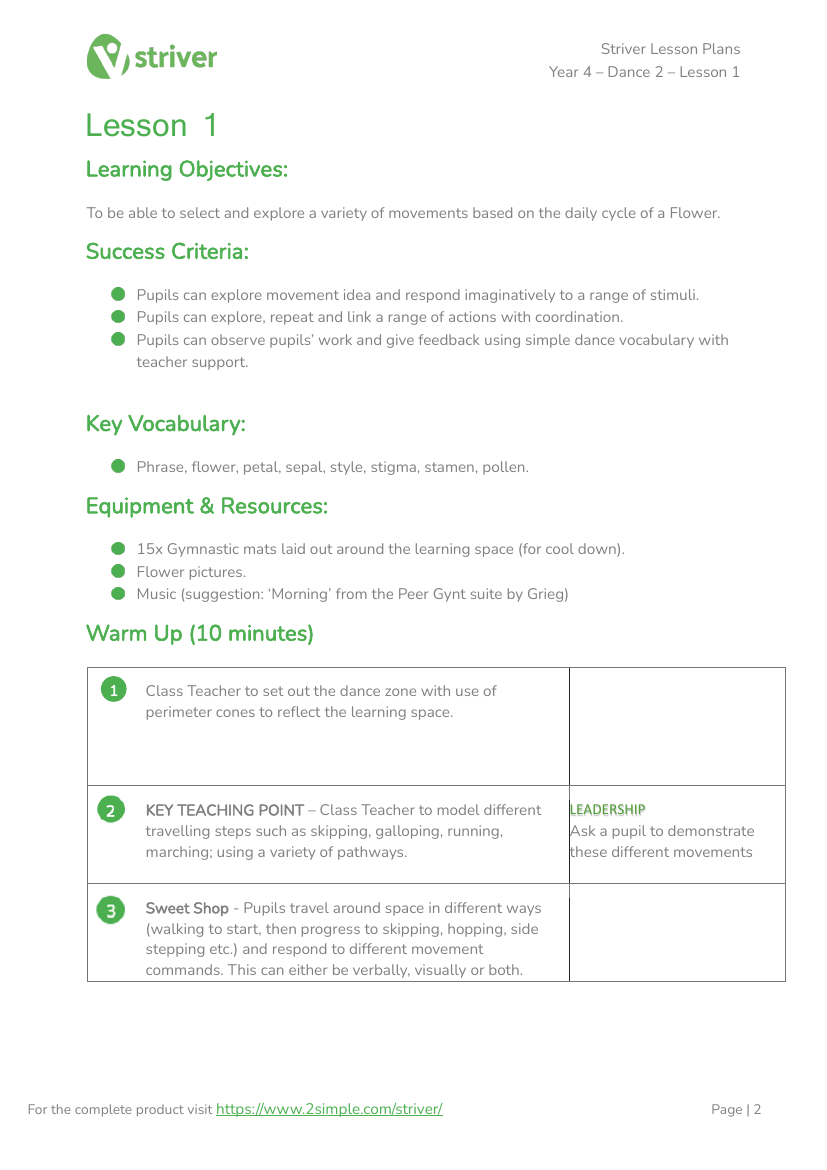
Physical Education Resource Description
In the first dance lesson of "Dance 2" for Year 4, students embark on a creative journey to explore the daily cycle of a flower through movement. The learning objectives are clear: students must select and explore a variety of movements, respond to different stimuli with imagination, repeat and link actions with coordination, and provide feedback using simple dance terms. The lesson is rich with key vocabulary related to flowers, such as petal, sepal, style, stigma, stamen, and pollen, setting the stage for a thematic exploration of nature through dance. With equipment like gymnastic mats and flower pictures, the lesson begins with a warm-up where students move around the space in various ways, responding to commands associated with different sweets, such as 'Bubble gum' and 'Toffee', which correlate to specific movements.
The main part of the lesson delves deeper into the theme of life cycles, particularly focusing on the movements of plants. Without revealing the dance theme at first, the teacher plays Grieg's 'Morning' from the Peer Gynt suite, prompting students to imagine and discuss the imagery and mood evoked by the music. The teacher then introduces the concept of flowers and their characteristics, leading to a discussion on the role of flowers and their daily opening and closing rituals. Students are encouraged to express these ideas physically, using their hands, arms, and entire bodies to mimic the blooming and wilting of flowers, accompanied by music. In groups, they improvise dance phrases, taking on roles such as the central part of the flower, and eventually perform their choreographed sequences to the class. The lesson concludes with a cool-down activity that revisits the 'Sweet Shop' game and incorporates stretching and breathing exercises, preparing the students to transition back to their regular class activities.

